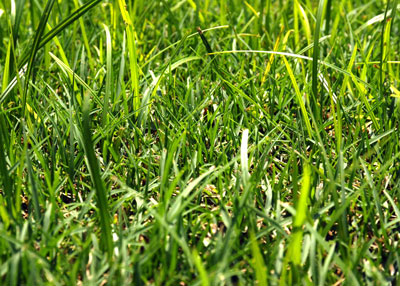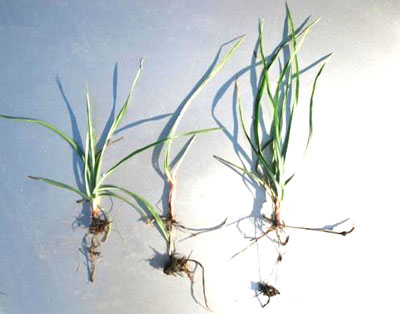Worst of the Weeds: Nutsedge

This stuff is like the chiggers in tall weeds – it’s just about everywhere. And your time to control it is quickly grinding to a halt for Growing Season 2021. I’ll outline the details.
• It’s not a true grass. That’s why normal grass killers don’t do a very good job of controlling it. It’s a sedge. Sedges have triangular stems. Grasses (bermudagrass, corn, Johnsongrass, etc.) have round stems. Roll a stem around between your index finger and your thumb and you’ll feel what I mean.
• It’s a perennial weed. That means that it dies to the ground with the first freeze in the fall and comes back when the soil warms in the spring. That’s why pre-emergent weedkillers won’t help with it – it’s not coming up from its seeds.

• It has a small “nutlet” at the base of each plant’s stem. That’s its storage organ that survives from one year to the next. They look like tiny pea-sized coconuts. If you dig the nutsedge out carefully you’ll see that the nuts are daisy-chained together. That’s how the weed spreads.
• The two products that control nutsedge in lawns and landscapes are Sedgehammer and the original Image.
• Both of these must be applied while the sedge is growing actively. Image requires two treatments 30 days apart. The manufacturer recommends that both treatments be made between May 15 and September 15. That means that the first of the two should be made by August 15. That’s why I alerted you that your time is running out for this year.

• Read and follow label directions carefully, especially regarding watering the Image into the soil. Image enters the plants through their roots. Therefore, it is slow acting. You’ll notice that the nutsedge plants will disappear gradually. But stick with them – you will notice improvement.
• If you still have a few nutsedge plants left around come next spring, run through the process one more time.
• Finally, note that Image was originally tested as a growth retardant for turfgrasses. Don’t be surprised if you have to mow the lawn less often in the treated areas.
